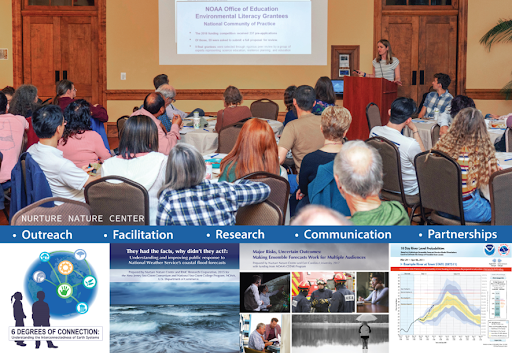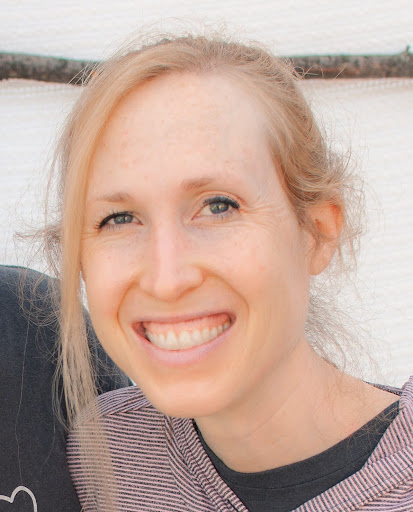The Nurture Nature Center, a non-profit that works to build community resiliency in the face of environmental risks, is one of four organizations recently named as an AGU Thriving Earth Exchange Community Science Hub. With funding from the Gordon and Betty Moore Foundation, the hubs program is designed to build regional capacity for community science activities across the United States. Each hub will receive $50,000 a year for two years to launch and support 12 projects, for a total of 48 projects by the end of 2025.
Nurturing resilience
 The Nurture Nature Center was founded in 2007 in response to repeated flooding in the Delaware River and the Easton, Pennsylvania area. Since then, it has expanded its social science research projects to locations across the country, including communities affected by flooding and extreme weather in California, North Carolina, North Dakota, Colorado, Maryland, Nebraska and Alaska.
The Nurture Nature Center was founded in 2007 in response to repeated flooding in the Delaware River and the Easton, Pennsylvania area. Since then, it has expanded its social science research projects to locations across the country, including communities affected by flooding and extreme weather in California, North Carolina, North Dakota, Colorado, Maryland, Nebraska and Alaska.
“The Nurture Nature Center is dedicated to understanding and communicating flood risk and resilience to communities,” said Kate Semmens, the Center’s science director. “We conduct research, develop partnerships and engage with stakeholders to improve flood preparedness and response. Our goal is to empower communities with the knowledge and resources they need to thrive in the face of flooding.”
The center also works closely with the National Weather Service’s Weather Prediction Center to improve precipitation forecasts, excessive rainfall outlooks and other products that help emergency managers assess flood risk, issue timely warnings and take actions to mitigate the impacts of flooding. These improvements are based on the center’s research into how individuals and professionals use weather forecast and warning information for decision making.
Expanding reach
As a Community Science Hub, the Nurture Nature Center will draw on its community connections and partnerships to reach even more underserved communities impacted by flooding and connect them with the expertise and resources they need. With support from the hubs program, the organization will pair community leaders with volunteer technical experts to tackle local priorities in a community-led process facilitated by a trained community science fellow.
In addition to completing projects focused on advancing particular priorities, project teams will help foster networking and capacity building for community science within the involved communities.
Passion and experience

Kate Semmens
Semmens has a long history of working with Thriving Earth Exchange. In 2019 she served as a Community Science Fellow for a project related to stormwater infrastructure and climate change in the city of Tacoma Park, Maryland. In that role, she worked to identify a local doctoral student to conduct a modeling study that helped the city decide where to prioritize funding to upgrade stormwater infrastructure so that it can be more prepared for future flooding events.
“This experience taught me about the importance of understanding and centering communities in the process of community science,” she says. “The professional and the personal development that I got through the program was instrumental in helping the Nurture Nature Center move forward in the community science space.”
.
Honoring community perspectives
Semmens said that the Tacoma Park project also showed her how much communities carrying out these types of projects need funding to cover instruments, consulting and other resources. “Asking communities to do this without providing the necessary financial support is a hard ask, especially for disadvantaged communities,” said Semmens. “I am happy that the Community Science Hubs program is helping fill this gap by providing a generous support line for both the community lead and for implementing the program.”
Semmens is also active in the AGU Science and Society section’s efforts to integrate science and art at AGU. Additionally, she serves as an editor on the editorial board of AGU’s Community Science journal, which was designed to communicate community science research in a way that accentuates and honors the community’s perspective.
“We have a commitment to these communities,” said Semmens. “We want to see them thriving [and] getting the support they need. We don’t want to just come in and do our research or do our project and leave. We see this new partnership with AGU’s Thriving Earth Exchange as a great opportunity to support this and develop community science around underserved communities affected by flooding.”

